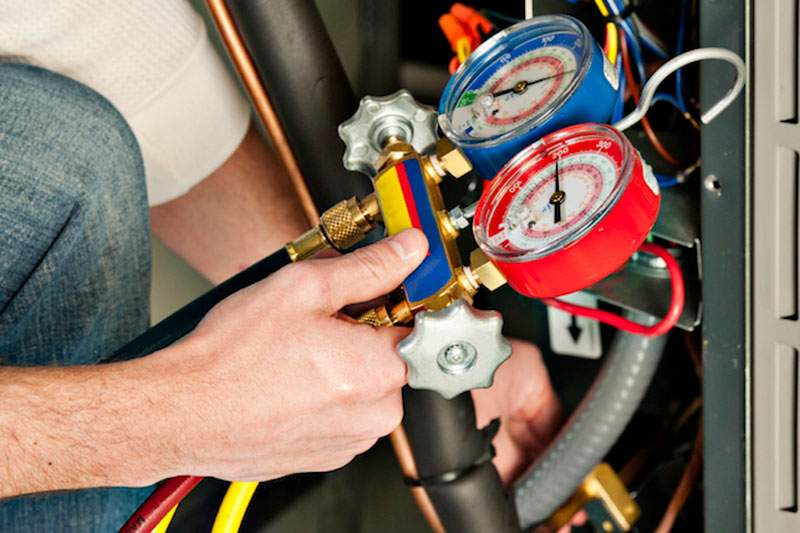
You might not think much about how your air conditioner operates, but it relies on refrigerant to keep your home cool. This refrigerant is controlled by environmental laws, because of the chemicals it contains.
Subject to when your air conditioner was added to your home, it may require R-22, R-410A or R-32 refrigerant. We’ll discuss the differences and which air conditioner refrigerants are being phased out in Eastland, in addition to how these phaseouts have on influence on you.
What’s R-22 and Why Is It No Longer Being Made?
If your air conditioner was added before 2010, it probably uses Freon®. You can find out if your air conditioner contains it by calling us at 254-505-3248. You can also look at the name plate on your air conditioner condenser, which is found outside your house. This sticker will contain information on what kind of refrigerant your AC has.
Freon, which is also called R-22, has chlorine. Scientists consider Freon to be bad for the earth’s ozone layer and one that results in global warming. The Environmental Protection Agency, which manages refrigerants in the United States, outlawed its creation and import in January 2020.
Should I Replace My R-22 Air Conditioner?
It depends. If your air conditioning is operating as designed, you can continue to run it. With yearly air conditioner maintenance, you can expect your AC to run around 15–20 years. However, the Department of Energy notes that substituting a 10-year-old air conditioner could save you 20–40% on annual cooling expenses!
If you don’t replace your air conditioner, it can lead to an issue if you need air conditioning repair in the future, specifically for refrigerant. Repairs may be pricier, since only small quantities of recycled and reclaimed R-22 is accessible.
With the end of R-22, a lot of new air conditioners now rely on Puron®. Also known as R-410A, this refrigerant was made to keep the ozone layer healthy. Since it calls for a varying pressure level, it doesn’t work with air conditioners that need R-22 for cooling.
However, Puron still has the potential to lead to global warming. As a consequence, it may also ultimately be discontinued. Although it hasn’t been mandated yet for residential air conditioners, it’s anticipated sometime this decade.
What Refrigerant Will Take the Place of R-410A?
In preparation of the end, some manufacturers have begun using R-32 in new air conditioners. This refrigerant ranks low for global warming possibility—approximately one-third less than R-410A. And it also decreases energy use by around 10%, according to the Intergovernmental Panel on Climate Change’s Fourth Assessment Report. That’s savings that could be sent on to you through your energy costs.
J & J Air Conditioning Can Assist with All Your Air Conditioning Needs
In brief, the changes to air conditioner refrigerant probably won’t affect you greatly until you need repairs. But as we went over beforehand, repairs connected to refrigerant can be more costly because of the restricted levels that are accessible.
In addition to that, your air conditioner often malfunctions at the worst time, typically on the warmest day when we’re experiencing lots of other appointments for AC repair.
If your air conditioner relies on an outdated refrigerant or is getting old, we suggest upgrading to a new, energy-efficient air conditioner. This ensures a stress-free summer and could even decrease your cooling expenses, especially if you choose an ENERGY STAR®-rated system. Plus, J & J Air Conditioning offers many financing solutions to make your new air conditioner fit your budget. Contact us at 254-505-3248 to get started right away with a free estimate.

